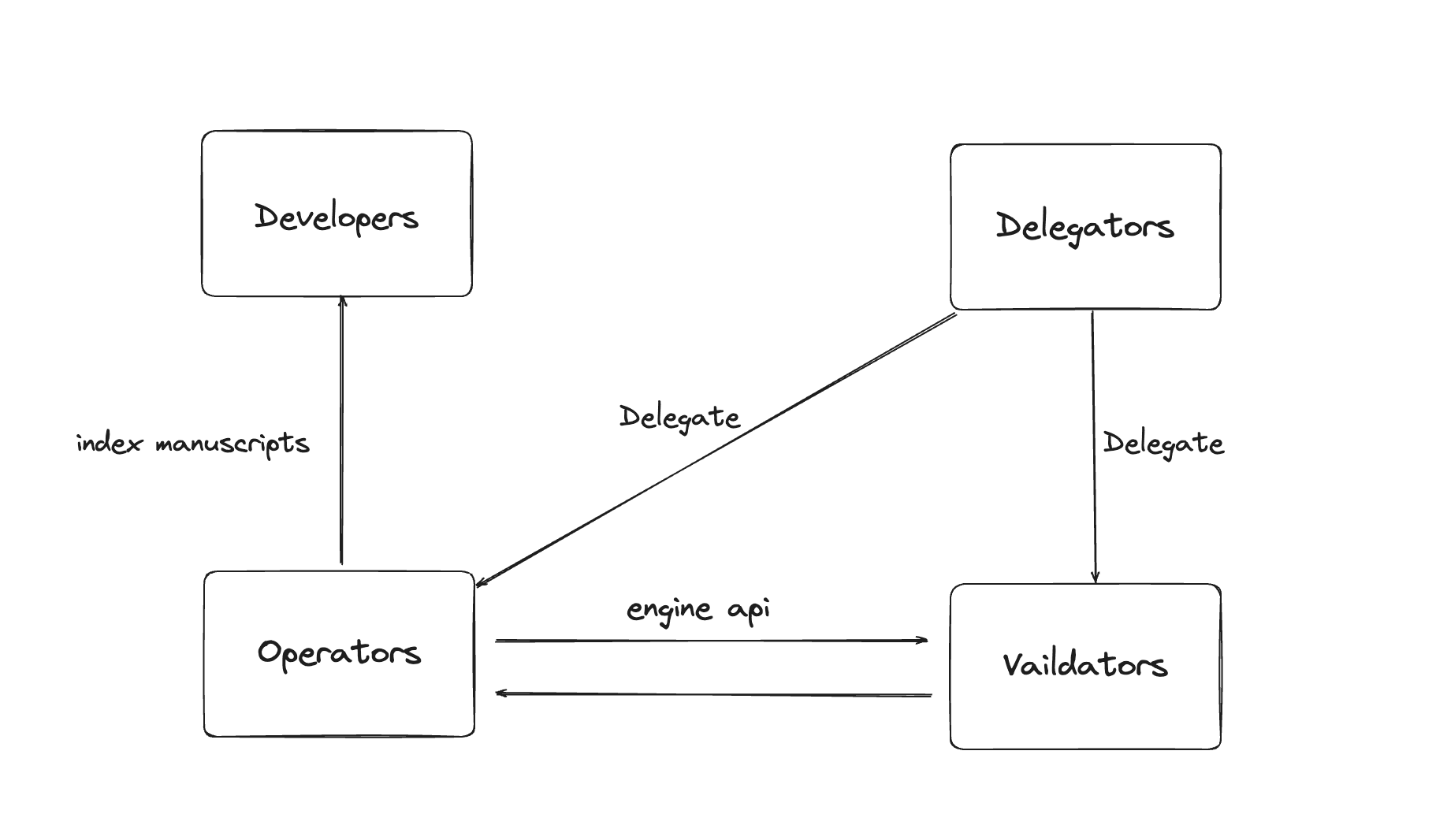A strong and vibrant decentralized network is not merely a stack of single technical codes but a sophisticated ecosystem collaboratively maintained by different roles. It is like a complex living organism, where each component plays an indispensable role in driving the overall operation and evolution. Today, we will delve into the core architecture of the Chainbase network, revealing the decentralized data symphony co-composed by developers, operators, validators, and delegators.

Developers: Visionaries and builders of data blueprints
In the ecological map of Chainbase, developers are both the initiators of demand and the creators of value. They are the architects of this data world, responsible for designing and building the core components known as 'data manuscripts'—a precise script that defines how data is extracted, processed, and presented.
With the help of the official `chainbase-sdk` tool, developers can unleash their creativity in a local environment, transforming complex data requirements into executable logic. After development is complete, Chainbase thoughtfully provides a sandbox environment for developers to conduct thorough testing and verification, ensuring that every manuscript runs accurately and flawlessly. When everything is ready, developers only need to perform a single on-chain operation to publish their masterpiece to the network. At this moment, they not only contribute valuable data processing capabilities to the ecosystem but also open the door to receiving network rewards for themselves. Meanwhile, as developers build their own DApps, they become consumers of network data, forming a perfect supply-demand closed loop.
Operators: Drivers and executives of the network engine
If developers are the designers, then operators are the construction team that turns blueprints into reality. They are the computing power hub of the Chainbase network, ensuring the execution layer can smoothly handle massive data tasks by providing powerful computational resources. The role of operators is akin to a more sophisticated 'proof of work' mechanism; the more hardware resources they invest, the greater the workload they can process, and the more substantial their rewards.
Becoming an operator means deeply participating in the underlying operations of the network. Aspiring participants need to first register on the Eigenlayer smart contracts on the Ethereum mainnet or testnet. This step is not only a technical connection but also a testament to Chainbase's deep integration into the Ethereum restaking ecosystem, leveraging its strong economic security.
Validators: Guardians and arbiters of network consensus
In any decentralized system, security and consensus are the cornerstones of maintaining trust. Validators play the role of 'guardians' in the Chainbase network. They bear the important mission of maintaining network stability and ensuring data integrity.
Chainbase employs an improved CometBFT consensus mechanism combined with a Delegated Proof of Stake (DPOS) model. This means that the voting weight of validators is determined by the amount of $C tokens they stake. This design ensures the efficiency and security of the consensus process while incentivizing validators to prioritize the long-term interests of the network. To become a validator, one must meet certain hardware and software thresholds, ensuring that only nodes with professional capabilities and firm commitments can participate in the network's core security maintenance.
Delegators: The economic cornerstone and enablers of network security
Not everyone has the technical ability to become an operator or validator, but this does not prevent them from contributing to the network's security and development. Delegators act as a bridge connecting ordinary users to network security. By staking their tokens with trusted operators and validators, they directly enhance the overall economic security of the network.
#chainbase The unique and powerful 'dual staking' mechanism of the network showcases its value at this moment. Delegators can choose to stake Ethereum ($ETH or LST) as well as Chainbase's native token ($C). This innovative mechanism deeply binds the strong security of the Ethereum ecosystem with the value of Chainbase's own ecosystem, creating an unbreakable economic moat that protects the network from potential attacks.
Under the synergistic effect of these four roles, the Chainbase network forms a self-driven, continuously evolving closed loop. Developers create value, operators execute value, validators safeguard value, and delegators consolidate value. Every participant finds their place in this open and transparent ecosystem.
This is not just a grand narrative about technology; it is a future paradigm about collaboration and win-win scenarios. Whether you are a developer, a technical expert, or a Web3 investor, the Chainbase network offers you a unique opportunity to participate. To learn more or join this vibrant ecosystem, please follow @Chainbase Official , and witness and participate in building the data infrastructure of the next era.


